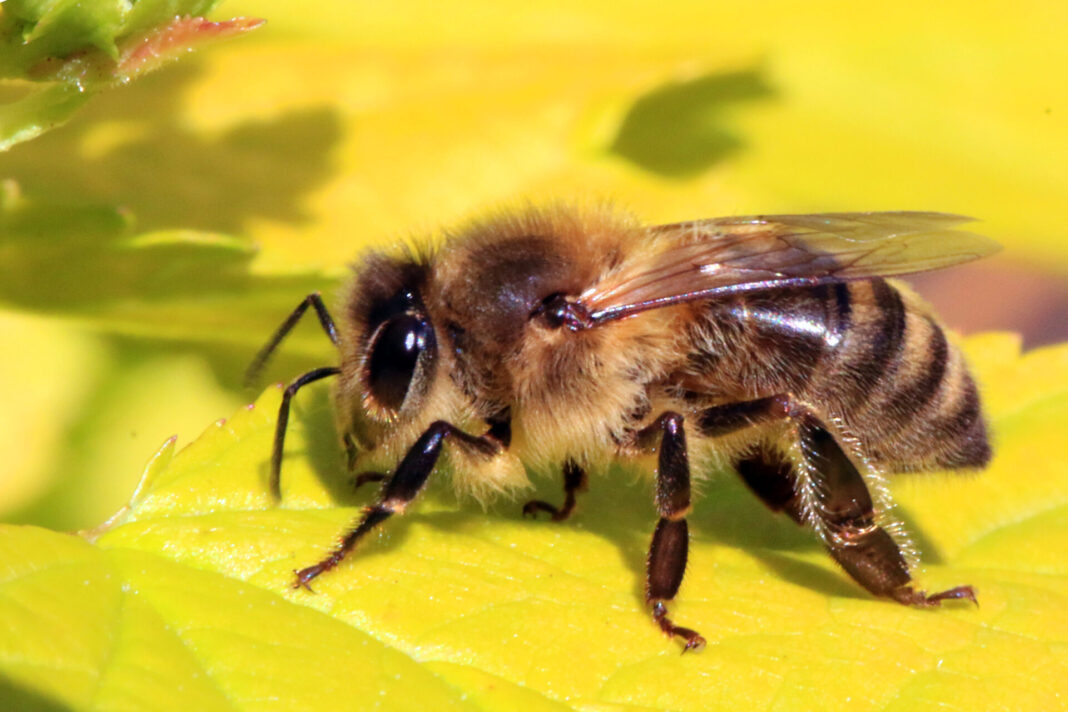More than two thousand years ago, the Roman poet Virgil included instructions in The Georgics whereby one could generate honey bees from the carcasses of slaughtered bullocks. We now know that this technique is, well, bollocks. Or, to speak using a more scientific vocabulary, one cannot reliably replicate the results Virgil claims no matter how carefully one follows his method.
In Honey Bee Vet: The Adventures of a Veterinarian Seeking to Doctor One of the World’s Most Important Animals (2024, Northern Bee Books), Tracy Farone delivers a scientifically grounded exploration of apiculture that is nevertheless shot through with joy. That is, Farone writes with caution and humility, but also gestures toward the ways that the mysterious and difficult-to-explain qualities of honey bees have inspired humans for millennia.
Farone is a scientist—a Doctor of Veterinary Medicine and Professor of Biology. Her training and professions clearly shaped her book, which operates as a kind of brief course on honey bees that introduces readers to their biology, anatomy & physiology, and behavior, as well as the diseases that afflict them and the treatments bee keepers can apply. While reading about the various systems—skeletal, muscle, nervous, endocrine, digestive, excretory, reproductive, cardiovascular, and respiratory—that keep a honey bee alive and functioning, I felt as if I was auditing a course: interested in the many details being covered, but also grateful that there would be no exams for me!
Farone’s frequent reminders about the complexity of her topic also mark Honey Bee Vet as the work of a scientist. A scientist knows that offering a definitive, final answer to a question is rarely possible. As Farone writes, “even for ‘experts’ in a particular field, we’re honestly just a few questions away from, ‘I don’t know . . . much is unknown . . . the data is changing . . . or more research is needed‘” (13). And very early in the book, Farone points to “festooning” (“a behavior in which bees cling to each other, often in single chains”) as one aspect of bees that confounds even the experts: although the behavior appears linked to the repair of old comb and measuring distances between spaces, “Sometimes scientists aren’t sure why [honey bees] do it” (5).
I appreciated Farone’s conscious effort to foreground an important reality: even though humans know a lot about honey bees—more than we ever have before—there are still limits to our knowledge. And further, some of our knowledge of bees is non-rational: Farone includes a section on the “human-bee bond” and describes the way that her bees follow her around in the evenings when she waters her plants and will hover around and crawl over her, but not her husband, when they sit on their deck (49). It isn’t possible to quantify and explain such behavior; Farone is satisfied to say, simply, that she has a relationship with her bees—they seem to “know” her. Farone’s willingness to leave some things unexplained runs counter to the hubris and certainty that characterizes too much writing about honey bees. Virgil’s missive about spontaneous colony generation was not his sole error; and he is certainly not the only writer to proclaim . . . inaccuracies about honey bees.
Farone’s humility is all the more remarkable given the performance of the teaching and research apiary she manages at Grove City College. These days, beekeepers regularly lose 40% of their hives every winter. Farone has had better results. As she almost begrudgingly mentions, “I have had 100% winter survival for three winters running” (84). She also shares that she “started with one colony in 2019” before growing the apiary to 18 colonies by May of 2022.
Farone’s success at overwintering and multiplying her hives, coupled with my own abysmal failures, lead to me doing most of my page marking and dog-earring in the section of the book on “Honey Bee Management.” I won’t share all of her practices and recommendations (you should track down her book if you want the complete list!), but will mention that Farone puts particular emphasis on biosecurity and varroa mites. She memorably describes the latter as “fleas combined with Rabies. A pervasive parasite with a nearly 100% mortality rate” (60).
I enjoyed Honey Bee Vet, but, as a word of warning to other novice or “hobby” beekeepers, I also found it discouraging. I have one hive in my backyard. None of the nucleus colonies (“nucs”) I’ve installed over the years have made it through winter. Farone’s honest writing made it clear that I have a choice to make. Option number one would require that I invest more time learning about and carrying out honey bee management. Farone recommends that during beekeeping season, one should open one’s hive/s for a visual inspection every week and use alcohol washes to carry out varroa mite counts every month or two. I confess that up to now I have not been that regularly involved with my bees. My second option would be to give up the hobby. I was already headed in that direction this year, but then a swarm came to me and moved themselves into the hive boxes standing vacant. Perhaps with Farone’s help, I can be a good steward to the bees that found me.
To be fair, I am not the audience Farone had in mind for Honey Bee Vet. The book argues that more collaboration is needed between serious beekeepers (those with multiple hives or even yards) and veterinarians. As a veterinarian-turned-beekeeper, Farone seems to have in mind readers who have experience and expertise in one field but not the other. So, a veterinarian willing to add honey bees to the list of animals they treat, or a beekeeper curious about a veterinarian’s perspective on beekeeping, are the ideal readers of Honey Bee Vet.
But even a novice like me—hobbled by an ignorance of veterinary science and perennially pulled toward too many projects—found the book interesting and useful.
Image via Wikimedia Commons











